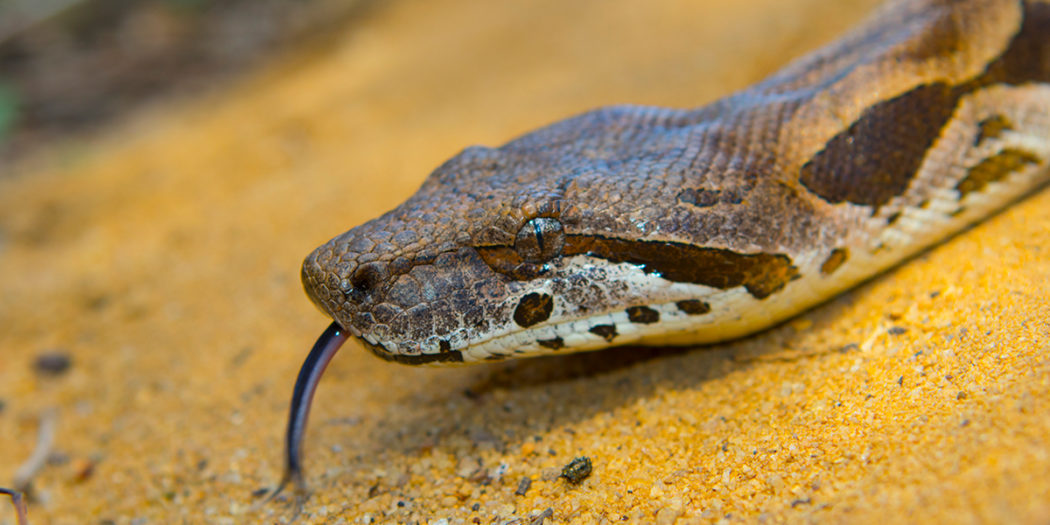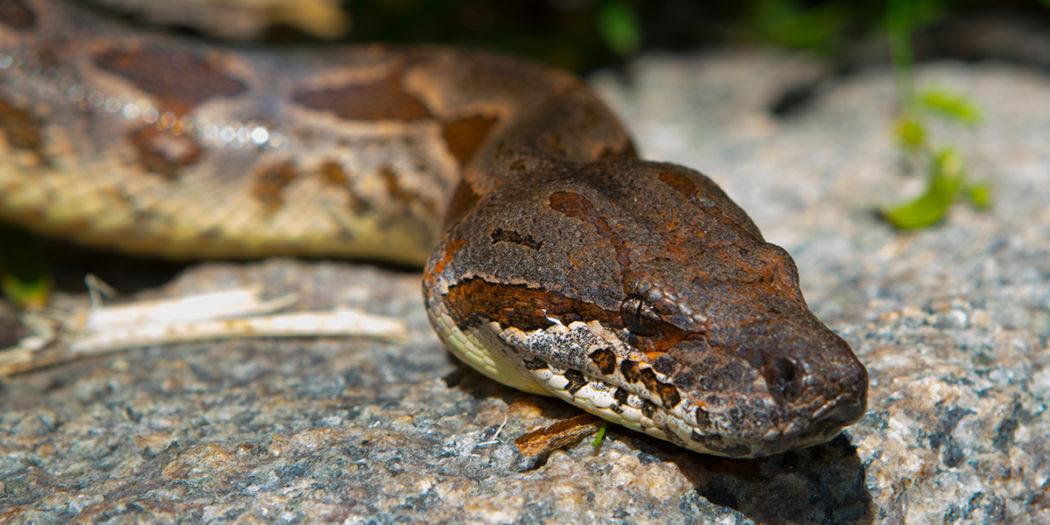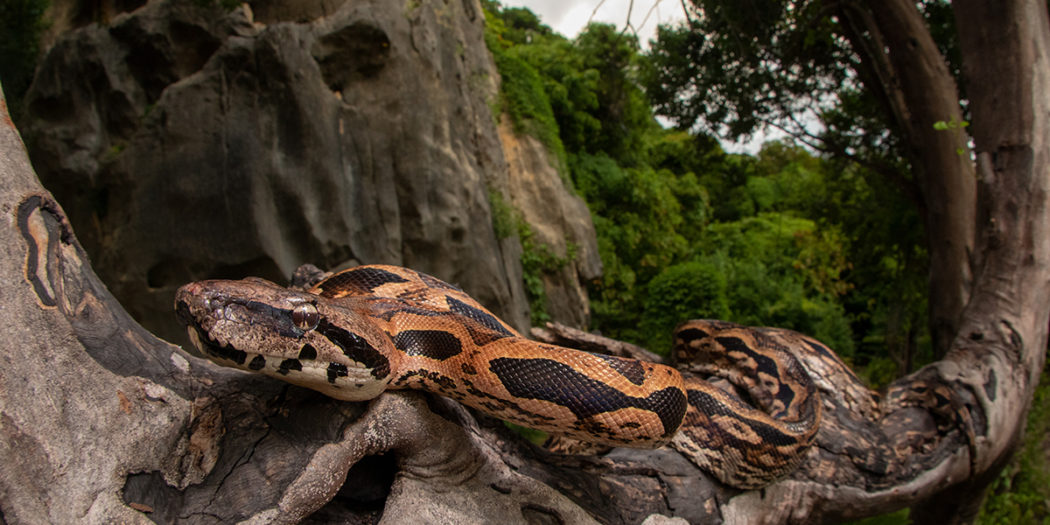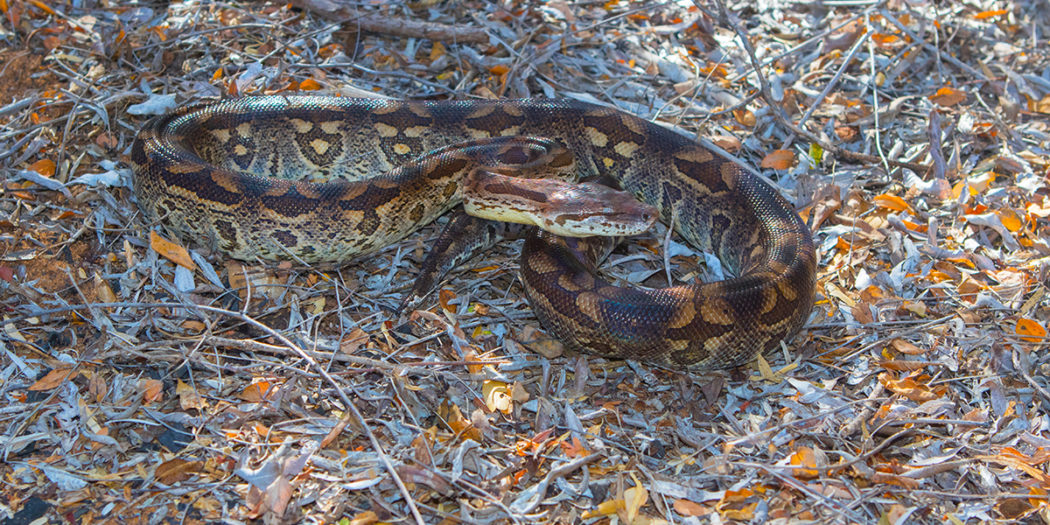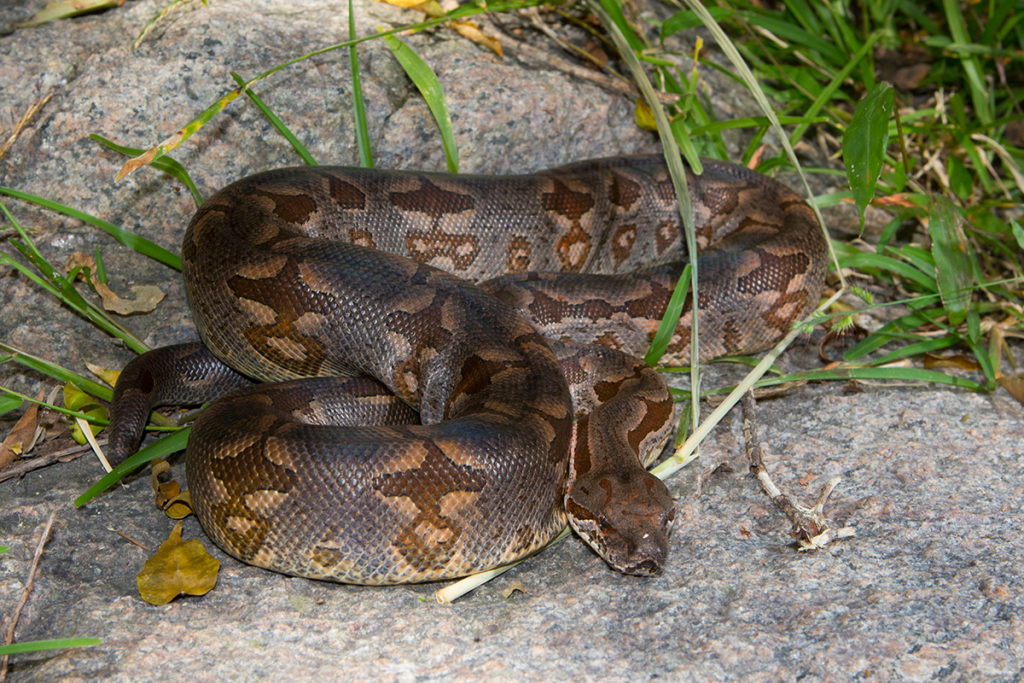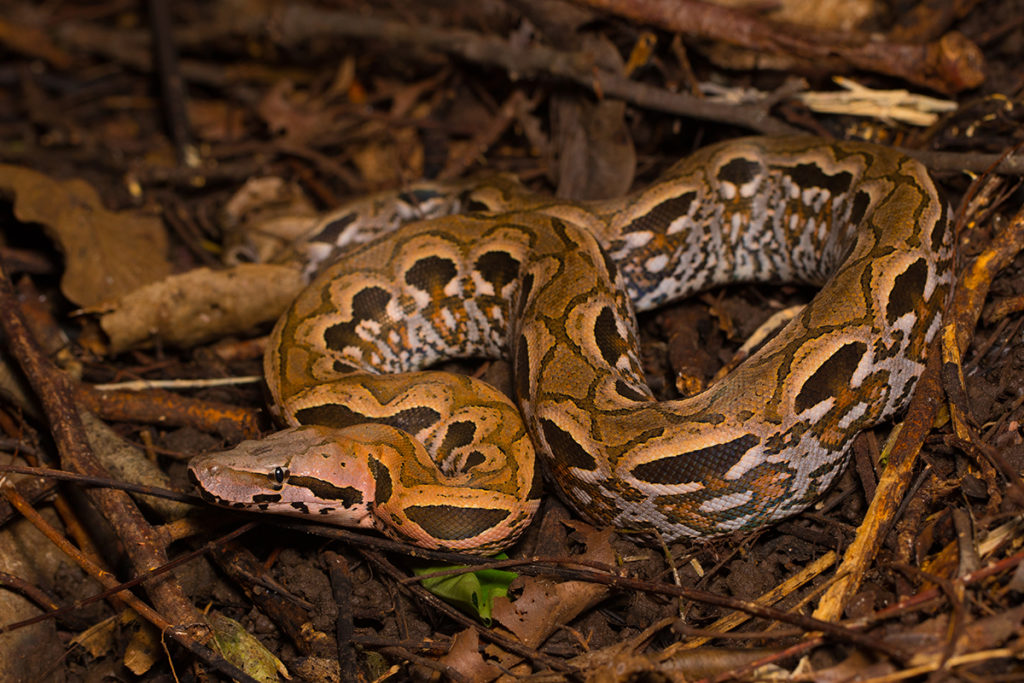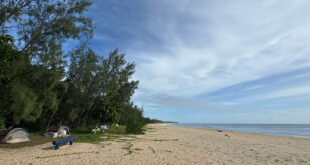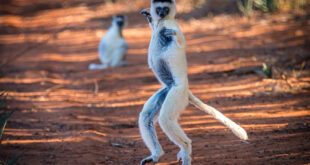A bit scary at first sight, but actually always friendly-minded: Madagascar Ground Boas are the largest snakes in Madagascar. Especially large females on Nosy Mangabe reach up to 15 kilograms bodyweight! Nevertheless, Madagascar boas are completely harmless to humans.
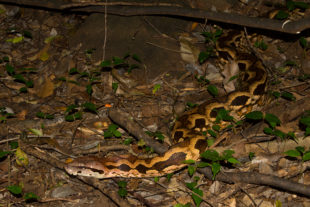
There are two species of Acrantophis: the Malagasy Ground Boa (Acrantophis madagascariensis) lives in the humid north of the island, while the Dumeril’s boa (Acrantophis dumerili) lives in the hot and dry south of Madagascar. The two species differ in appearance, especially in color, just as clearly in size. With up to 2.70 m, substantially larger animals are described in the Malagasy Ground Boa than in the southern species, from which scientists discovered so far only individuals with up to 1.90 m length. However, both are maximum values. Most Madagascar boas found in the forest are smaller.
At a few years, Madagascar boas are sexually mature. They mate during the rainy season. Males and females meet only to mate and then crawl their separate ways again. The pregnancy lasts until the next rainy season (six to nine months). Then the food supply is again optimal for the young. The female gives birth to six to eight live little boas in the wild. The young snakes are already a good half-meter long at birth. The young of Dumeril’s boa are usually somewhat smaller. Already on their first day of life, the small snakes shed their skin for the first time. They strip off their entire old skin like a dry sock. Underneath, the beautiful, shiny new skin is already waiting. Young Madagascar Boas are immediately independent. They still like to climb very well, which enables them to better protect themselves from prey predators such as Fossa, birds of prey, and other snakes. They lose this ability with age and body weight.
Madagascar boas only lie in wait for prey when the sun goes down. Especially at night, they hide well camouflaged under leaves and sand. Only the head peeks out. The patterning of their skin camouflages them perfectly! If an unsuspecting prey animal approaches, the boa shoots out, grabs the prey animal, and strangles it in seconds. The prey spectrum includes Madagascar rats, small lemurs, but also lizards and other snakes. Madagascar boas are no food guards. They eat what fits into their mouths and passes by at night. During the day, the snakes rest in the foliage, in hollow tree trunks, or burrows.
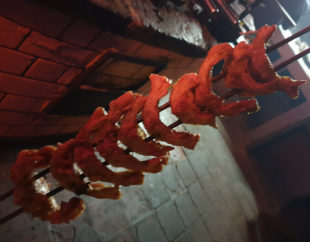
Because of their large distribution area, Madagascar boas are considered least concern on the IUCN red list so far. They do not enjoy any special protection status in Madagascar. Some restaurants in larger cities such as Antananarivo and Mahajanga even offer the meat of the boas as a delicacy. The two species are also hunted in many places to make bags, shoes, or questionable souvenirs from their leather. By the way, Madagascar boas are not only successful in their home country in adapting to new conditions and are therefore widespread. In the meantime, there are also occurrences on the Mascarenes and La Réunion.
If you want to find a Madagascar boa in its original home country Madagascar, you have many possibilities. In the national parks of Ankarana, Nosy Hara, and Masoala with the associated island Nosy Mangabe as well as in the reserves Reniala, Kirindy, and in the Anja Community Reserve, you have particularly good chances of a find.
 MADAMAGAZINE Your Magazine about Madagascar
MADAMAGAZINE Your Magazine about Madagascar
